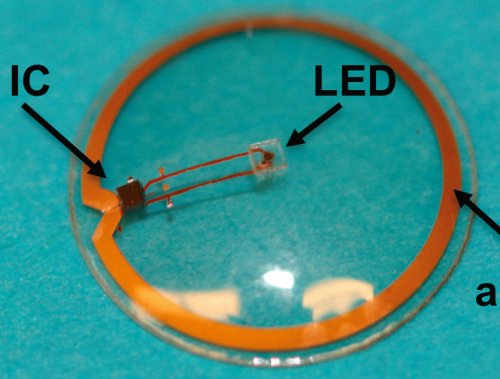University of Washington researchers have created a technology that could allow users to have e-mails beamed directly to their eyeballs, just like in Torchwood: Children of Earth (and Terminator before it). But in its current form, users will need to be able to decipher morse code.
The technology, which can display (or not display) an image via a contact lens has been tested on rabbits without any notable problems. Researchers say that although it hasn’t yet been tested on humans, they’ve addressed the most likely hurdle, which is the difficulty in human eyes focusing on an image at such close range. To get round that, they’ve shaped a lens to shorten the eye’s focal distance.
The work was co-authored with Aalto University researchers in Finland and has been detailed in the latest issue of the Journal of Micromechanics and Microengineering.
The existing model only displays a single light-emitting diode, meaning messages would have to be in morse code. To allow more complex displays such as text would involve adding more diodes without significantly increasing the thickness of the lens, a task the researchers believe is possible.
The LED used in the tests was blue and made from sapphire. It was embedded directly into a plastic contact lens, with the lens connected to an antenna built directly into the lens’ inside lip.
Another limitation is that the device requires a wireless battery and transmitter: the circuit is controlled via radio frequency transmission. A big problem at the moment is that although the wireless range is normally several feet, that’s reduced to as little as an inch once the lens is placed inside the eye.
The researchers also need to refine the current design as it uses a hard plastic (polyethylene terephthalate) for the lens. Not only is that uncomfortable, but it doesn’t allow air through to the eye, meaning it can only be worn for a few minutes. The goal is to build the same circuit into a lighter and more flexible lens.
Arnaud Bertsch, who has worked on similar projects, told Discovery it could take a decade to turn the concept into a fully functioning product, but noted that this is a significant breakthrough as it shows the basic concept is indeed workable.
(Image credit: Institute of Physics)

